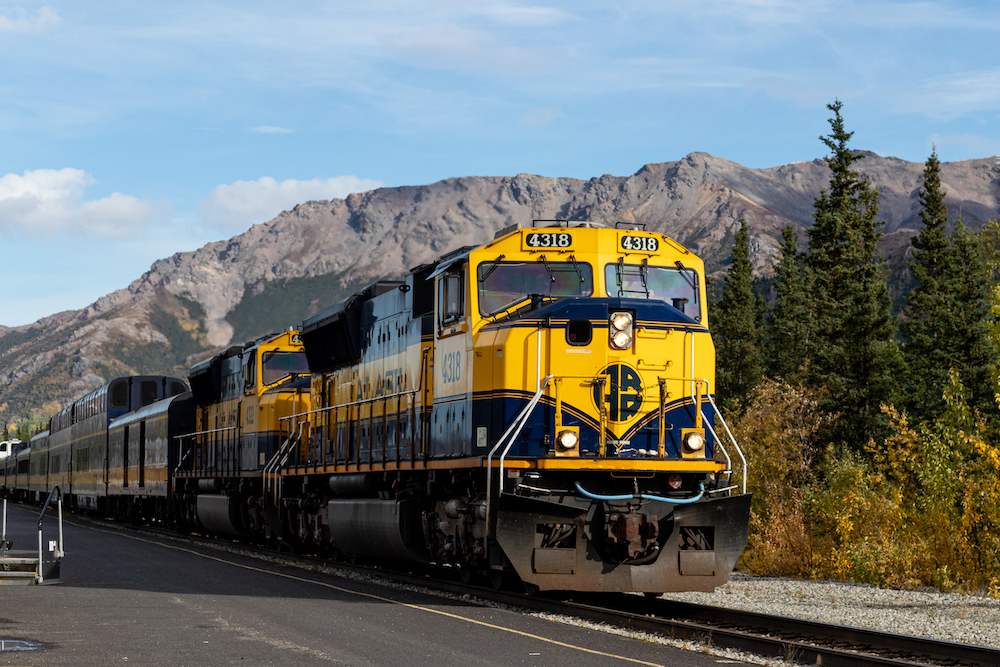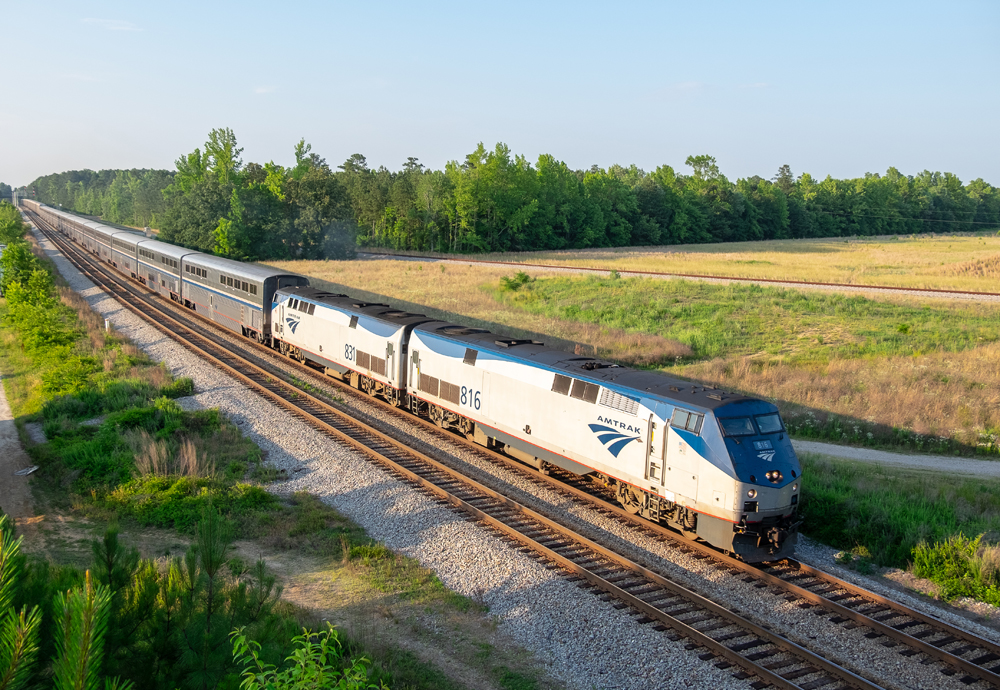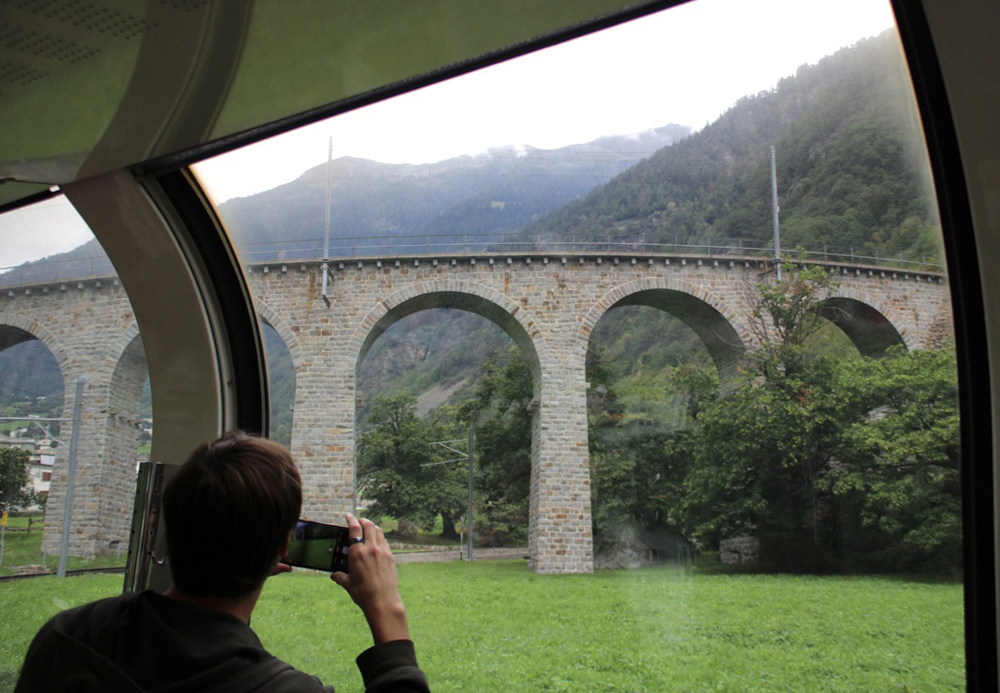Seashore Trolley Museum
The Seashore Trolley Museum is one of the world’s earliest successful enthusiast-led railroad preservation efforts. Founded in 1939 as the “New England Electric Railway Historical Society” to help preserve elements of rapidly vanishing electric interurban railways, the organization gradually developed an operating museum for electric and urban transit vehicles.
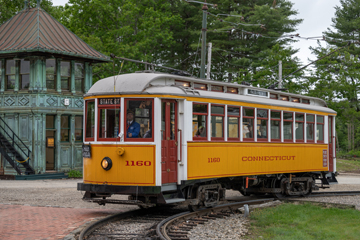
Based in Kennebunkport, Maine, on a short section of rebuilt Atlantic Shore Line Railway, today the museum boasts being “The World’s First and Largest Museum of Mass Transit.” It has a fascinating and diverse collection of railway and road vehicles.
My first trip to Seashore was as a child more than 50 years ago. I recall bubbling over with excitement at a trolley ride. In the 1970s and early ’80s, my family and I would visit Seashore on our drives to the Maine coast, where we visited my maternal grandparents during the summers. We loved traveling on the historic cars and walking through the car barns to discover the relics of the railway past that resided within.
This spring, my wife Kris and I visited the museum and found that great progress was being made. We took a spin on Connecticut Co. car No. 1160 to the end of the line at Talbott Park — a scaled interpretation of a classic “trolley park.” During the ride, the conductor provided a running narrative about the history of the line, the car, and electric railways in New England. At Talbott Park, we paused on the turnback loop for a second car to arrive. The motorman, dressed in his classic uniform, asked passengers if they had any questions. The only comment was, “We don’t even know what to ask,” and I realized that the museum faced an interpretive challenge. The age of the trolley car is beyond living memory for most modern visitors.
Museum Executive Director Katie Orlando explained to me that many first-time visitors think of trolleys as rubber-tired bus wanna-bes. She said the most effective way of interpreting electric railway history is simply by operating the trolleys while showcasing how electric railways created suburbs. Orlando was hired by Seashore in 2018 and has set out to transform the collection and preservation through development of a master plan. Working with the museum’s stakeholders, she spearheaded a two-year project to establish a grand vision to best allocate resources.
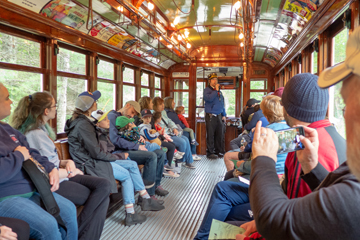
“We needed to catch up on strategic planning and deferred maintenance, while establishing clear short-term and long-term goals,” she says. The plan included narrowing the museum’s expansive collection of pieces awaiting restoration to just those pieces most relevant to the museum’s vision. Restoring equipment can be costly, she notes: “We picked 20 pieces for public fund raising.”
Among the most significant is the Narcissus, estimated to cost half a million dollars to fully restore. This deluxe wooden-body interurban electric was built in Laconia, N.H., in 1912. It’s now on the National Register of Historic Places and notably carried former U.S. President Theodore Roosevelt in 1914. Today, it’s the last surviving car from the long-defunct Portland-Lewiston Interurban railway company.
Among the museum’s most popular cars is Montreal Traction No. 2, an open-air “sightseeing car” that requires about $100,000 in truck work.
The museum also aims to put all of its cars under cover and out of the elements; to help reach this goal, it is now completing its new Burton B. Shaw South Boston carhouse. Another new building is being erected across the parking lot from the visitors center to house an enormous model railroad display. This is being funded by a generous multimillion dollar grant from the Wyss Medical foundation. Once completed, it will allow the museum to be open to the public year round.
What to see
Seashore’s visitor center hosts a ticket office, a gift shop with an extensive selection of electric railway and transit books, and exhibits describing the role and history of electric railways in the region. Trolleys are boarded from the platform outside, with a handicap lift if required. Seashore has six cars operating in regular rotation, with up to four cars running on busy days.
In addition to cars operated in regular service, Seashore also maintains another 20 or so ‘special fleet’ cars that are only operated occasionally, typically at special events. This includes the world’s first preserved trolley car, the Biddeford & Saco No. 31, a classic bench-style open car acquired by the museum in 1939.
Guests are encouraged to take a self-guided walking tour of the restoration shop and car houses where many of the best preserved cars are displayed.
Where to go and when to visit
The museum is located at 195 Log Cabin Road in Kennebunkport, Maine. It’s open 9:30 a.m. to 4:30 p.m. select days May to October — weekends in May, and Wednesday through Sunday from June to October, plus select December weekends. Popular events such as Crazy Hat Day (July 15, 2023) and Pumpkin Patch (fall weekends) are aimed at the general public as means of generating excitement and increasing ridership and awareness about the museum. Railroad enthusiasts may find the best times to visit are during the shoulder seasons (quieter times in the spring and fall before and after peak summer visitation). Enthusiast events that showcase special fleet cars include the annual Boston Day (Aug. 5, 2023), featuring Boston transit vehicles and a behind-the-scenes tour. Also, Members Day and Open House (Aug. 19, 2023). Orlando says if visiting railfans are interested in seeing specific equipment, to call in advance at: 207-967-2800 or visit trolleymuseum.org.
— Thanks to Dan Howard for his assistance with this article.
Updated to correct the name of the carhouse.
[Editor’s note: Read a blog post about Rene Schweitzer’s visit to the museum.]






